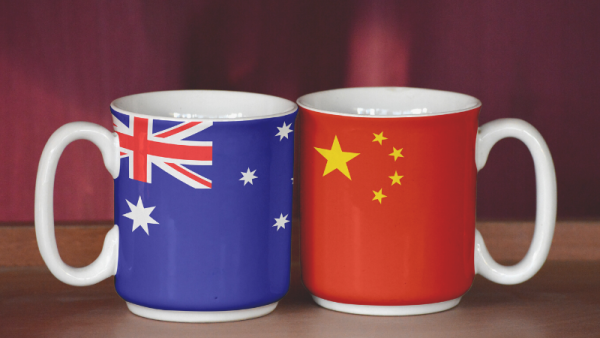Perspectives | PRC power shortages, coal and Australia
Aritra Deb / Shutterstock

Xunpeng Shi, Principal Research Fellow, Australia-China Relations Institute, University of Technology Sydney |

Muyi Yang, Adjunct Fellow, Australia-China Relations Institute, University of Technology Sydney |
Perspectives is UTS:ACRI's commentary series, featuring a piece on a topical subject in the Australia-China relationship from an invited expert contributor.
As the leading developing country exploring ways to achieve carbon neutrality amidst rapid economic growth, the People’s Republic of China (PRC) is grappling with power shortages.
Sixteen of its 31 provincial-level jurisdictions, including the globally significant manufacturing powerhouses of Jiangsu, Zhejiang and Guangdong, are rationing electricity. Factories have been ordered to use less power and even close for a few days a week to mitigate the shortfall.
In northeast China, power shortages affect residential life.
These power curbs have hurt the Chinese economy and damaged global supply chains already struggling to cope with the COVID-19 pandemic.
While power rationing in some areas is due to local governments’ efforts to meet the central government’s strict energy consumption and energy intensity targets, a shortage of generation from coal-fired power plants is the fundamental reason for the shortages.
The PRC’s coal prices have hit record highs several times in September this year. Prices for the most heavily traded thermal coal futures contract (ZC201) on the Zhengzhou Commodity Exchange hit US$200 (CNY1,288) a tonne on September 28, up from US$150 three weeks ago. A year ago, the price was US$85, which was also the five-year average before COVID-19.
Due to high coal prices and regulated power prices, coal generators are operating at a loss and have no financial interest in generating power. The PRC’s power tariffs are only adjusted occasionally. Under the current electricity prices, the average break-even coal prices for power plants are CNY600 per ton, less than half of the current prices.
Current coal prices mean that power generators are not even able to recover their variable costs, and accordingly, the economically rational decision is to stop producing. While being required to continue to operate by authorities, power plants are finding ways to get around this. An example is that despite a power system crisis in Liaoning province, only 50 percent of coal generation capacity is being utilised.
While some provinces are planning to increase electricity prices, the increases are unlikely to be of a sufficient level to offset the cost surge.
Record coal prices signal the need for more coal supply in the short term, even as the government tries to reduce reliance on coal-fired power generation in the long term. To realise the PRC’s carbon neutral goal, coal consumption will need to peak before 2025 and all coal consumed in facilities without carbon capture and storage technologies will be completely phased out before 2060.
However, the PRC government has been promoting coal capacity cuts since 2016 as a part of the government’s ‘supply-side reform’ agenda. Additionally, there have been increased penalties for workplace safety violations, frequent checks by the Central Inspection of Ecological and Environmental Protection (CIEEP), and a corruption probe focused on the coal industry in the PRC’s largest coal-producing province - all of which have greatly reduced previously unreported coal production.
The result has been that the growth of coal supply has lagged behind the demand of electricity. While the PRC’s newly-added renewable generation is the world’s largest, this has still failed to meet additional power demand.
According to a report on September 8, coal production in the first seven months of 2021 was up at a compound annual rate of only 4.1 percent compared with the same period in 2019, while the country’s electricity generation increased at a rate of 7.4 percent over the same period. If the cut in unreported coal production is accounted for, the supply shortfall is even greater.
On top of this, the ban on coal imports from Australia, which accounted for 49.3 percent of the PRC’s total coal imports in 2019, has not helped.
While an energy transition will lead to the phasing out of coal in the long run, mismanagement of the process can lead to the short-run shortages currently being experienced.
Given that the PRC produces and consumes half of the world’s coal, a small variation in the PRC’s supply or demand will have a significant impact globally. The PRC’s supply shortfall has been a key driver for the surge in the world coal prices.
As a major coal exporter, Australia enjoys increased revenue from coal exports due to increased prices. The thermal coal price at Newcastle Port – the benchmark price for the Asian market – has increased to over US$160 per metric ton in August this year, up from around US$50 per metric ton in August last year. In recognition of the current rising coal prices, Australia export values of thermal coal are forecast to be AU$17 billion in this financial year (2021-2022), up from the previous quarter’s forecast of AU$15 billion, according to the quarterly market assessment produced by the Department of Industry, Science, Energy and Resources.
Such windfall revenues, however, can quickly disappear as the process of energy transition and decarbonisation deepens in the PRC and other Asia-Pacific economies. Indeed, the PRC’s recent power crisis is likely to provide strong incentives for the country to further expedite the uptake of stable-cost clean energies, in order to reduce its exposure to coal price fluctuations as well reduce emissions.
The PRC’s recent experience with the power crisis may also provide additional incentives for the energy transition in other Asia-Pacific countries, who want to prevent the occurrence of a similar crisis in their own territories.
Authors
Associate Professor Xunpeng Shi is Principal Research Fellow at the Australia-China Relations Institute, University of Technology Sydney.
Dr Muyi Yang is a researcher at the Australia-China Relations Institute, University of Technology Sydney.

